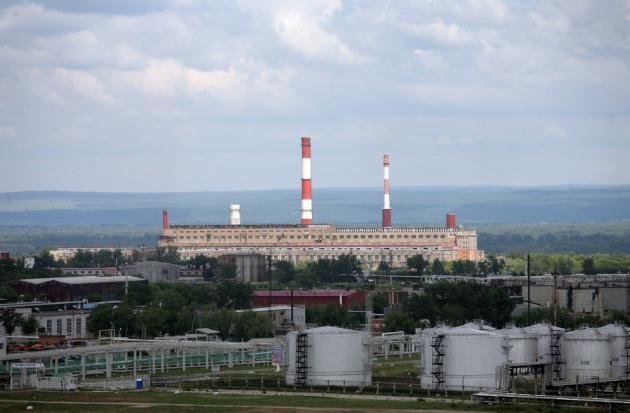The oil industry of Russia is one of the key for the country's economy. It is represented by many enterprises. Among the most important are the Novokuybyshevsky Oil Refinery. Contacts between this refinery and other industry enterprises are carried out within the group of companies owned by the country's largest oil corporation - Rosneft.
general information
The Novokuybyshevsky Oil Refinery (oil refinery) is located in the Samara Region. The enterprise is one of the companies included in the Samara refinery group, which was acquired by Rosneft in 2007. Novokuybyshevsky Oil Refinery appeared in 1951. It launched the production of a number of petroleum products, which until then had not been produced in the USSR: for example, oil for rockets and fuel for jet engines.
In the late 50s and mid-60s. The plant went through several stages of modernization; its capacities expanded. New technological processes in the field of petrochemistry were mastered. In the early 1970s, the refinery was reconstructed. In the 1990s, facilities designed for catalytic reforming were modernized on it, thanks to which the Novokuybyshevsky refinery was able to completely redesign for the production of unleaded gasolines .
History of the refinery: the Soviet period
The history of the plant has several periods. The first is characterized by work in Soviet times. So, in 1951, the Novokuybyshevsky refinery was launched. Oil workers began to work on it for the benefit of the socialist economy. The enterprise was built, as noted by a number of experts, for the needs of the defense and rocket and space industries. The factory set up production of sufficiently advanced products for the Soviet oil industry.
History of the refinery: as part of the Yukos company
After the collapse of the USSR, the enterprise moved into a new era. The time of a market economy. The assets of the Novokuybyshevsky Oil Refinery (as part of the authorized capital) fell into the possession of the oil company Yukos, established in November 1992. The enterprise, being part of a large company, was actively developing: in particular, in the 90s, Yukos carried out the modernization of all facilities operating in the Samara Region. Improvement of production processes also affected the Novokuybyshevsk refinery.
As part of the modernization program, YUKOS divided oil refining technologies, each of which began to be applied at a separate enterprise, which is part of a group of companies. In particular, at the Novokuybyshevsky Oil Refinery, the capacities were redesigned so that oil refining took place at the most deep level. Raw materials to be processed at the plant (in the form of heavy distillates) were brought here from the Samara refinery and a similar enterprise in Syzran.
History of the refinery: as part of Rosneft
In 2007, a new period of the plant’s work began - it was bought by Rosneft. The plant’s capacities were subjected to the next stage of modernization. As a result, new types of products began to be produced at the refinery. Such as diesel fuel (meeting European quality standards), as well as new bitumen used in road construction.
Refinery Activities
Now the refinery successfully continues to play a significant role in the Russian oil refining industry. The work of the Rosneft holding largely depends on such a plant as the Novokuybyshevsky oil refinery. The official site of the plant’s parent company (rosneft.ru) contains detailed information about the subsidiary, what are its specifics and what are the tasks facing the enterprise management (information can be found in the Oil Refining section). It can process about 9.56 million tons of oil per year - such is the capacity of its facilities. In 2007, in particular, the annualized indicator amounted to 7.43 million tons (that is, the capacities were loaded at about 77.7%).

The oil refining depth was quite high - about 77.4% in the same 2007. To understand where the raw materials supplied to the Novokuybyshevsky Oil Refinery are extracted, a map of Western Siberia will be extremely necessary for us - it is there (as well as in the Samara Region) that the target fields are concentrated. The company produces fuel for almost all types of vehicles. It also produces components that are part of lubricating oils, petrochemical products, scythe, bitumen. The company is preparing for reconstruction as part of a separate program that provides for the construction of a hydrocracking complex, a reforming unit, and reconstruction of infrastructure elements for isomerization and coking. The purpose of the modernization program is to ensure production at the refinery products that will comply with the Euro-5 standard.
About Rosneft
What is a Rosneft company that owns the assets of such an enterprise as the Novokuybyshevsky oil refinery? The address (legal) of this organization is in Moscow. A number of sources indicate that this company is the leader of the Russian oil industry and at the same time one of the largest world companies in this industry. Rosneft is engaged in exploration, produces oil and gas, and also produces many types of petroleum products. In addition to the Novokuybyshevsky refinery, it owns other plants.
Rosneft also operates in the gas industry. The production of “blue fuel” in the total share of natural resources produced by the company is about 10%. But from year to year, this sector, according to analysts, is gaining increasing priority for the company (which may be due to the large number of gas reserves that Rosneft has access to). There is evidence that the company expects to produce 55 billion cubic meters of gas annually by 2020.
There is evidence that Rosneft is one of the strategic companies of the Russian Federation. The main shareholder of the company is the company OJSC Rosneftegaz (75.16% of the shares), which, in turn, is 100% owned by the state.